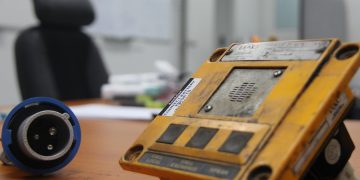Not known Incorrect Statements About Roar Solutions
Table of ContentsHow Roar Solutions can Save You Time, Stress, and Money.4 Easy Facts About Roar Solutions DescribedNot known Facts About Roar Solutions
In order to secure installations from a potential surge a method of evaluating and categorizing a potentially unsafe area is required. The function of this is to ensure the proper choice and setup of equipment to inevitably avoid a surge and to make sure safety of life.

No equipment ought to be set up where the surface area temperature level of the tools is more than the ignition temperature level of the given hazard. Below are some common dust dangerous and their minimum ignition temperature. Coal Dust 380C 225C Polythene 420C (melts) Methyl Cellulose 420C 320C Starch 460C 435C Flour 490C 340C Sugar 490C 460C Grain Dirt 510C 300C Phenolic Material 530C > 450C Aluminium 590C > 450C PVC 700C > 450C Residue 810C 570C The likelihood of the danger existing in a focus high adequate to trigger an ignition will differ from location to location.
In order to categorize this danger an installation is separated right into locations of danger depending upon the quantity of time the unsafe exists. These areas are referred to as Areas. For gases and vapours and dirts and fibres there are three areas. Area 0 Zone 20 A dangerous environment is highly most likely to be existing and may be present for extended periods of time (> 1000 hours annually) or even continuously Area 1 Zone 21 A hazardous ambience is feasible but not likely to be existing for extended periods of time (> 10 450 C [842 F] A classification of T6 means the minimal ignition temperature is > 85 C [185 F] Hazardous location electric tools possibly developed for usage in higher ambient temperature levels. This would showed on the score plate e.g. EExe II C T3 Ta + 60C( This means at 60C ambient T3 will certainly not be surpassed) T1 T1, T2, T3, T4, T5, T6 T2 T2, T3, T4, T5, T6 T3 T3, T4, T5, T6 T4 T4, T5, T6 T5 T5, T6 T6 T6 A T Course score of T1 suggests the maximum surface area temperature created by the tool at 40 C is 450 C. Assuming the linked T Class and Temperature level rating for the devices are appropriate for the location, you can constantly use a tool with a more rigid Division score than needed for the area. There isn't a clear solution to this question regrettably. It actually does depend on the sort of tools and what repairs require to be performed. Devices with details test treatments that can't be performed in the area in order to achieve/maintain 3rd party ranking. Should come back to the factory if it is prior to the devices's solution. Area Repair By Authorised Employee: Difficult testing may not be needed nonetheless specific procedures may require to be adhered to in order for the tools to maintain its third party score. Authorised workers have to be employed to perform the work correctly Repair work need to be a like for like substitute. New part have to be considered as a direct replacement requiring no special screening of the equipment after the repair is complete. Each tool with a dangerous score must be examined individually. These are laid out at a high degree listed below, but also for even more comprehensive info, please refer directly to the guidelines.
10 Simple Techniques For Roar Solutions
The devices register is an extensive database of devices documents that consists of a minimum set of areas to determine each product's place, technical parameters, Ex-spouse classification, age, and environmental information. The ratio of Detailed to Shut examinations will be identified by the Equipment Threat, which this website is evaluated based on ignition risk (the chance of a source of ignition versus the probability of a combustible environment )and the dangerous location classification
( Zone 0Area 1, or 2). Executing a durable Risk-Based Assessment( RBI )technique is essential for ensuring conformity and security in taking care of Electrical Equipment in Hazardous Areas( EEHA).
How Roar Solutions can Save You Time, Stress, and Money.

In terms of eruptive risk, a hazardous location is an environment in which an eruptive environment is present (or might be anticipated to be present) in amounts that require unique safety measures for the construction, installment and use of tools. eeha training. In this article we discover the challenges encountered in the workplace, the threat control measures, and the called for competencies to function securely
It issues of modern-day life that we manufacture, store or manage a range of gases or fluids that are deemed combustible, and a variety of dusts that are regarded combustible. These compounds can, in particular conditions, create explosive ambiences and these can have major and unfortunate repercussions. A lot of us are familiar with the fire triangle eliminate any kind of one of the three aspects and the fire can not take place, but what does this mean in the context of dangerous locations? When damaging this down into its easiest terms it is basically: a mix of a certain amount of release or leak of a certain substance or material, combining with ambient oxygen, and the presence of a resource of ignition.
In most instances, we can do little regarding the levels of oxygen in the air, however we can have considerable impact on resources of ignition, as an example electric equipment. Hazardous areas are documented on the dangerous area classification illustration and are recognized on-site by the triangular "EX" sign. Here, among other essential info, zones are split right into 3 kinds relying on the threat, the chance and period that an eruptive ambience will certainly exist; Area 0 or 20 is considered the most dangerous and Area 2 or 22 is considered the least.
Comments on “Rumored Buzz on Roar Solutions”